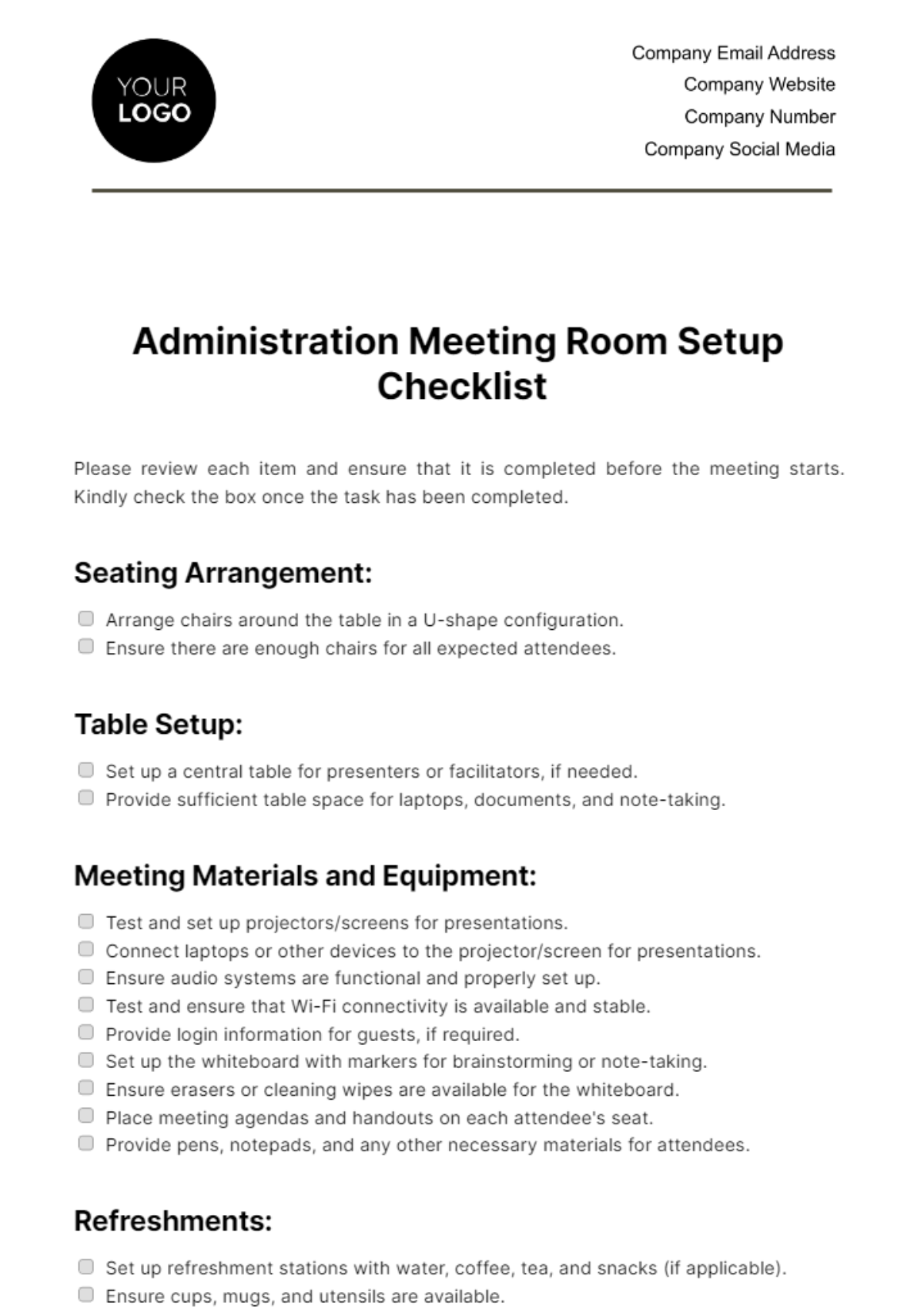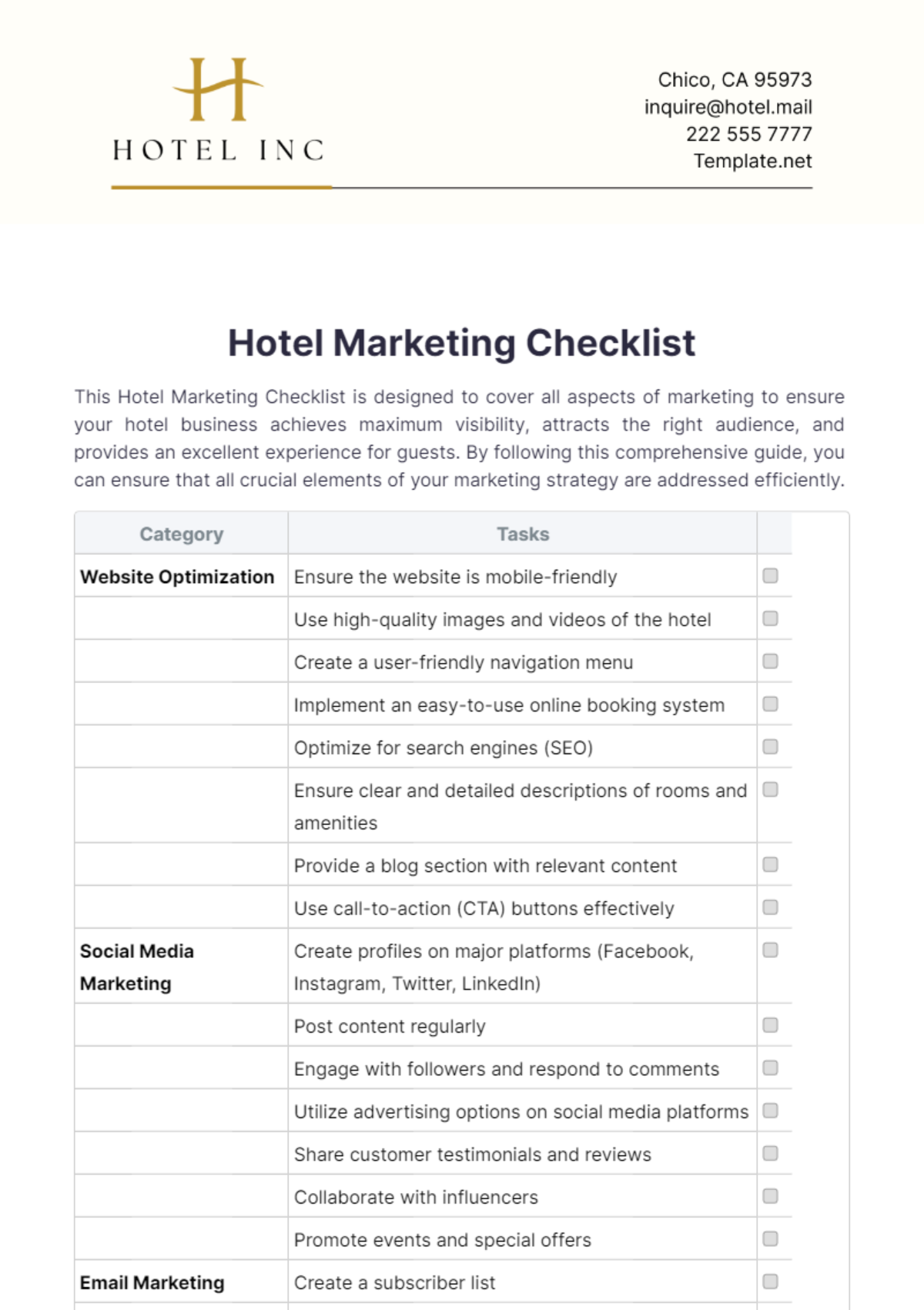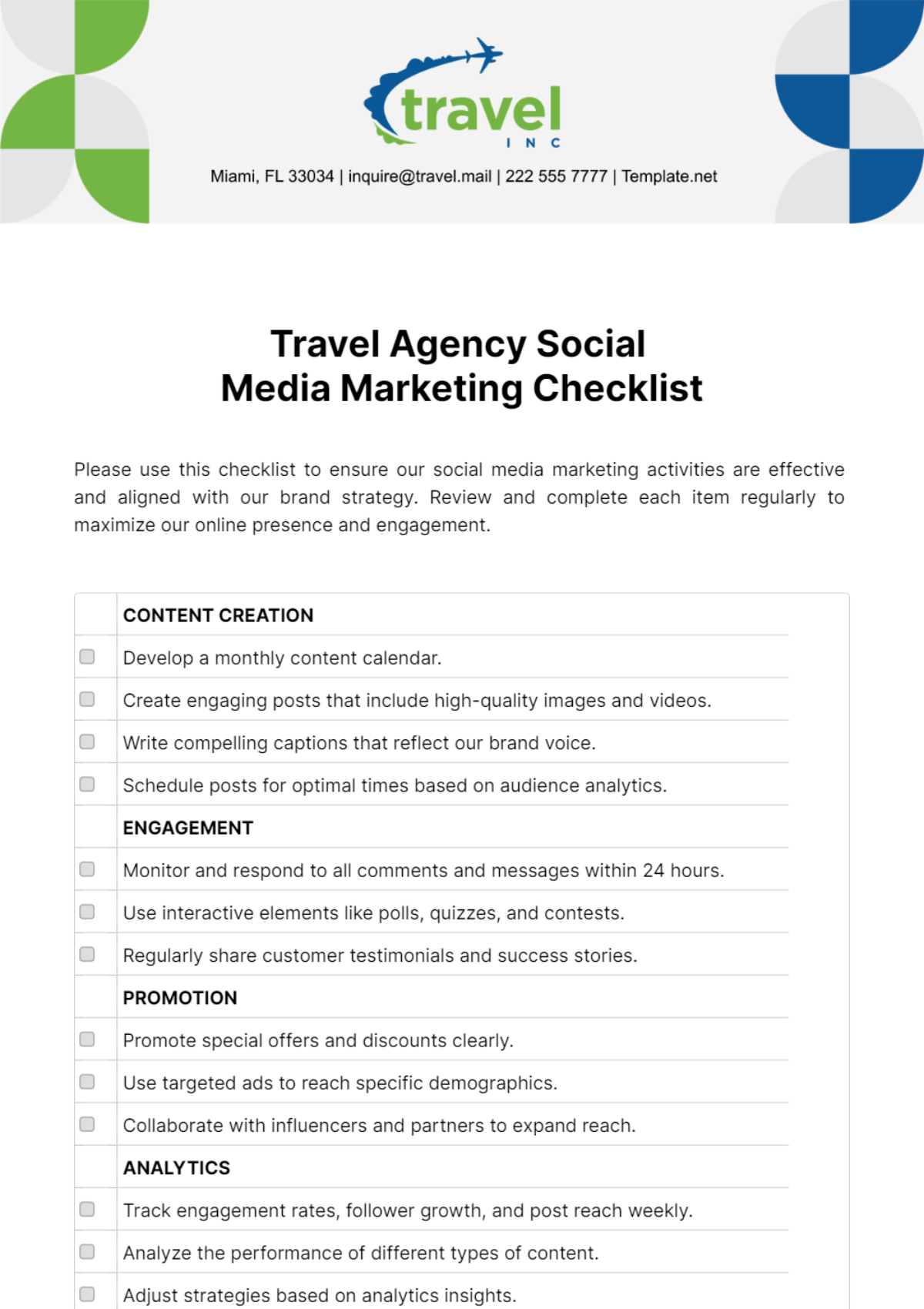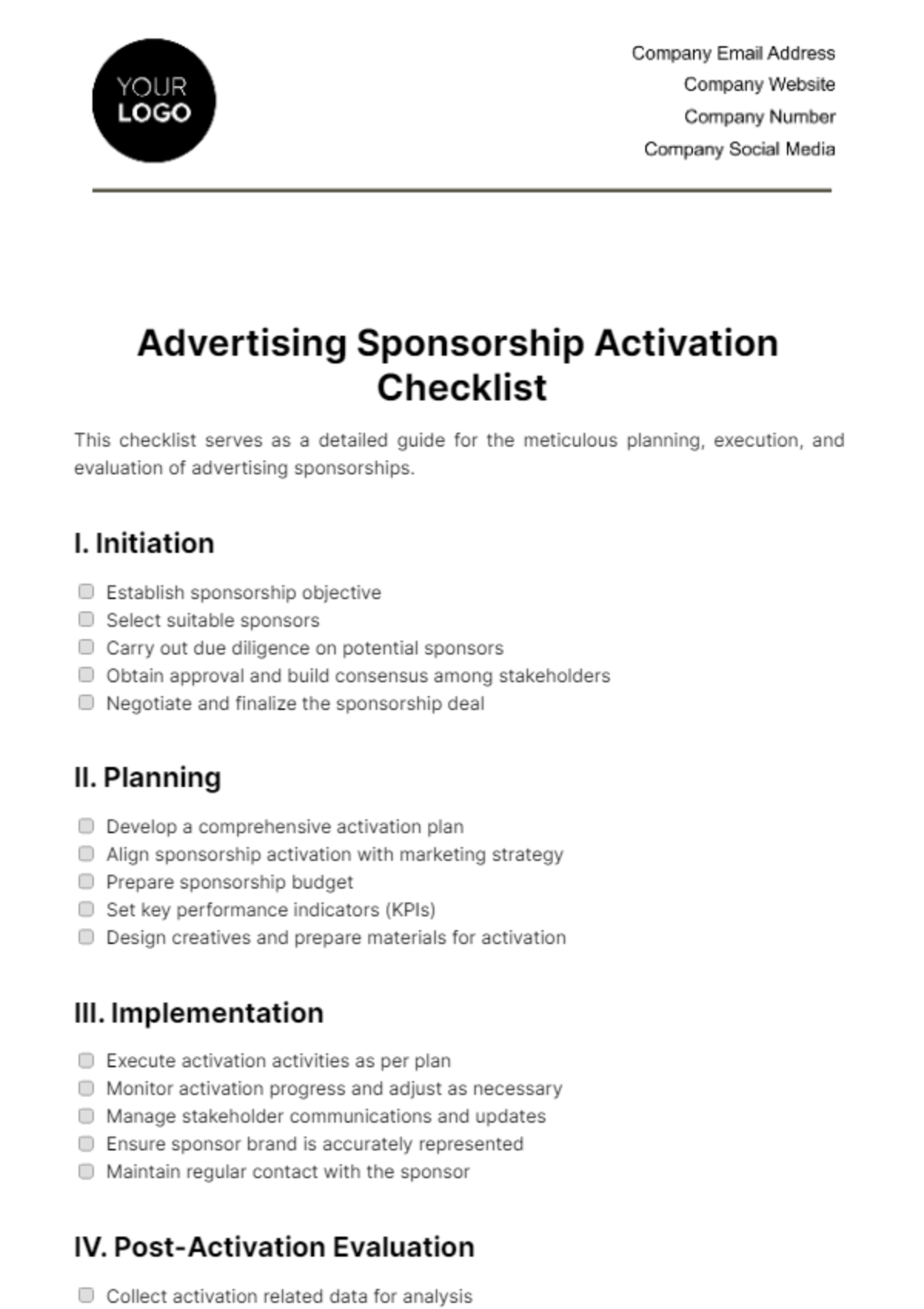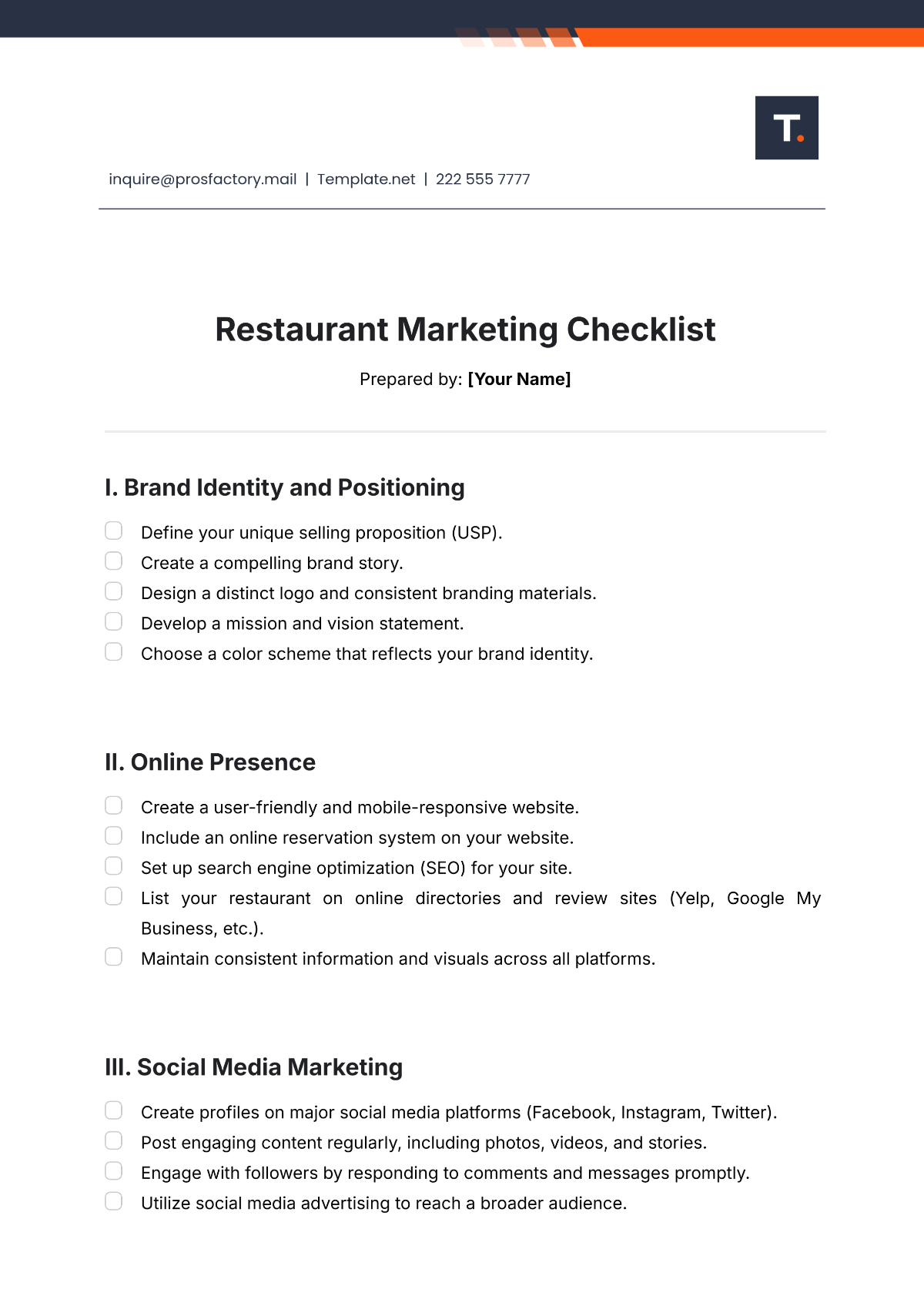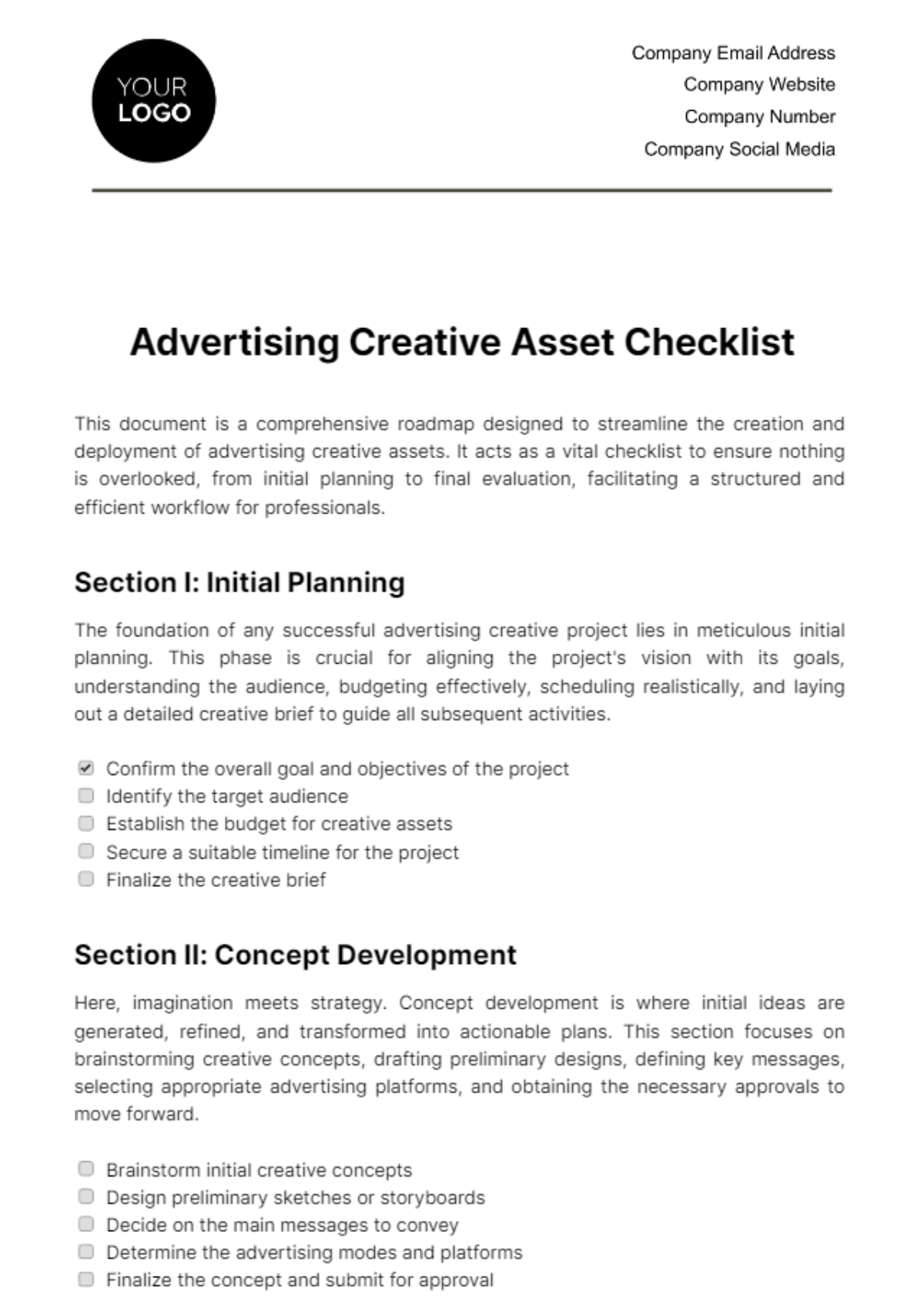Free Marketing Campaign Checklist
Streamline your marketing efforts with the Marketing Campaign Checklist Template from Template.net. This fully editable and customizable template ensures every detail is covered, from planning to execution. Easily adapt it to your needs using our intuitive AI Editor Tool. Perfect for marketing managers seeking a structured, efficient approach to campaign management.






